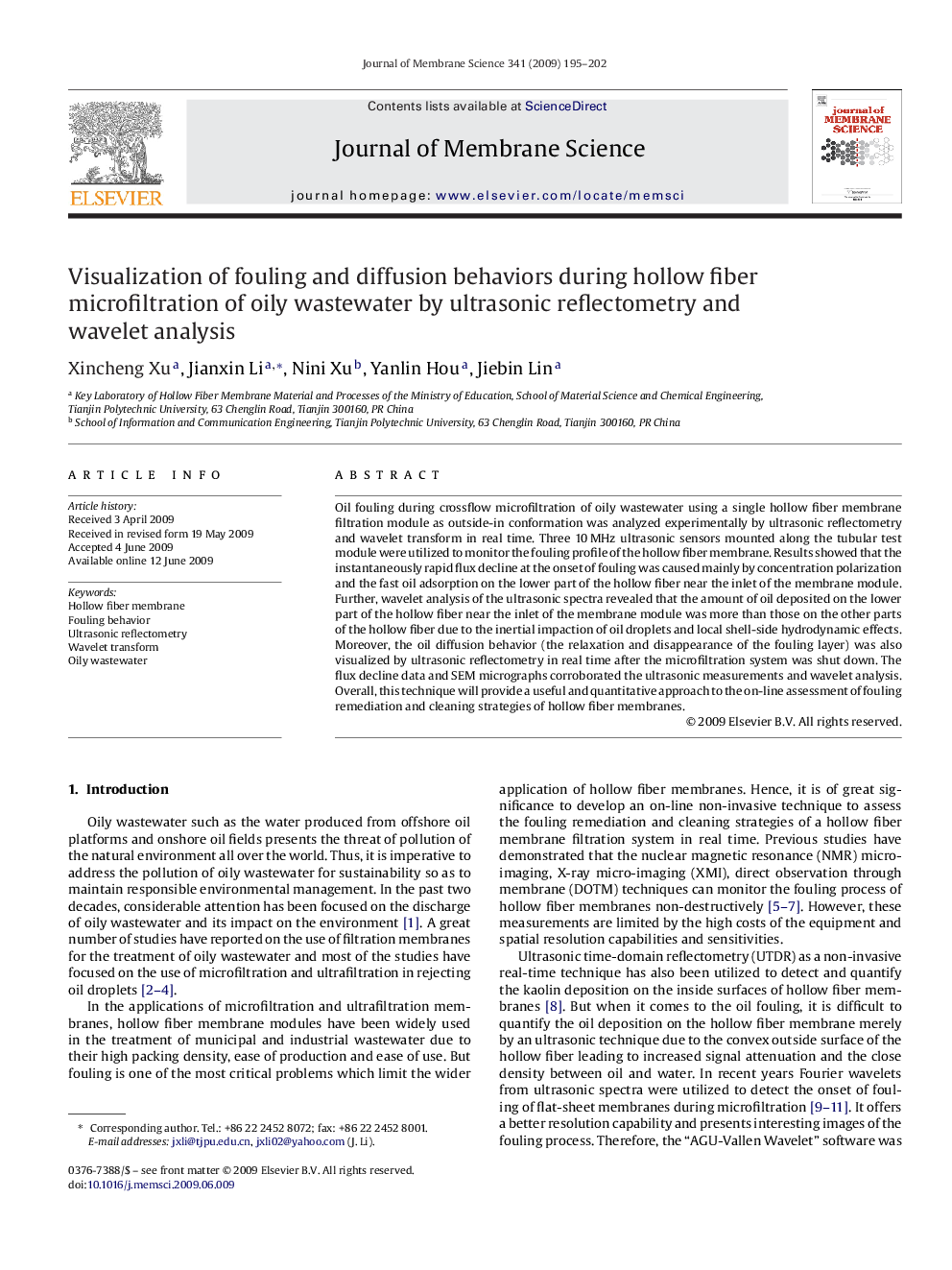| Article ID | Journal | Published Year | Pages | File Type |
|---|---|---|---|---|
| 636852 | Journal of Membrane Science | 2009 | 8 Pages |
Oil fouling during crossflow microfiltration of oily wastewater using a single hollow fiber membrane filtration module as outside-in conformation was analyzed experimentally by ultrasonic reflectometry and wavelet transform in real time. Three 10 MHz ultrasonic sensors mounted along the tubular test module were utilized to monitor the fouling profile of the hollow fiber membrane. Results showed that the instantaneously rapid flux decline at the onset of fouling was caused mainly by concentration polarization and the fast oil adsorption on the lower part of the hollow fiber near the inlet of the membrane module. Further, wavelet analysis of the ultrasonic spectra revealed that the amount of oil deposited on the lower part of the hollow fiber near the inlet of the membrane module was more than those on the other parts of the hollow fiber due to the inertial impaction of oil droplets and local shell-side hydrodynamic effects. Moreover, the oil diffusion behavior (the relaxation and disappearance of the fouling layer) was also visualized by ultrasonic reflectometry in real time after the microfiltration system was shut down. The flux decline data and SEM micrographs corroborated the ultrasonic measurements and wavelet analysis. Overall, this technique will provide a useful and quantitative approach to the on-line assessment of fouling remediation and cleaning strategies of hollow fiber membranes.
